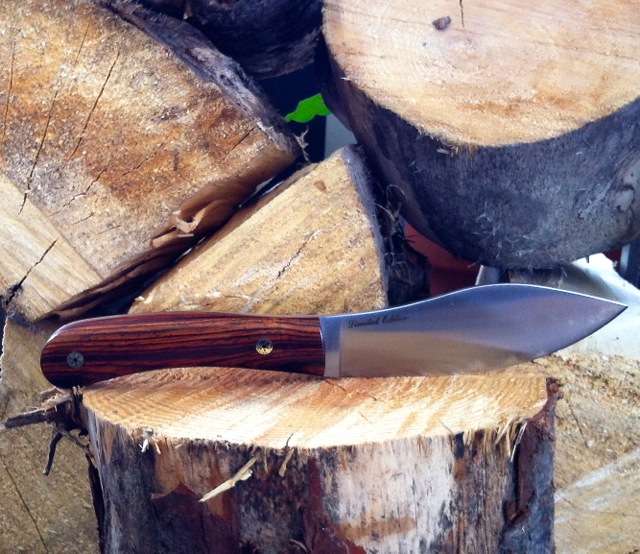Chris -
The first requirement for a good skinner is a fair bit of belly. With this in mind;
The original Nessmuk design (of which we only have a drawing) is generally believed to be a descendent of the Sheep Skinner, a common knife design found on the frontier, and ranches/farms of the time. If you compare these two designs (the originals, not necessarily the various interpretations, which differ to varying degrees), you'll notice that the traditional Nessmuk has a lower point - more along the midline of the knife - than most historic 'skinner' designs, which are usually more upswept. This "tweak" that Sears had put into the design allowed the knife to still be a quite capable skinner/game knife, but also be more versatile for other camp tasks as well.
So the Sheep Skinner would be a more dedicated, true 'skinner' and the Nessmuk that most likely evolved from it is more of an 'all around' camp knife (as it would have been defined in Nessmuk's time and for his uses, not necessarily the same as how many define a "camp knife" today). There may be more versatile designs for more modern, bushcraft-specific uses, but these often have much narrower blade profiles with little useful belly (as there is more of a focus on woodcraft and less on game with many bushcrafters today), and thus they often don't make for good skinning/game knives in addition to their intended uses, as the Nessmuk does. Keep in mind also that true skinners tend to have thinner blades than many modern interpretations of the Nessmuk do. Nessmuk's knife likely was thinner as well (though we don't know for sure), since he was a fan of carrying an axe as the primary tool for chopping/wood tasks.
Here are a couple modern examples of the Nessmuk, both of which I would highly recommend as well-made versions capable of serious work (there are certainly others as well);
Bark River Nessmuk:
Blind Horse "MUK":
If you can't tell, I really like 'muks. Hope that helps!







